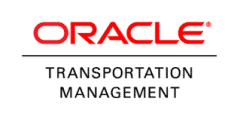Oracle Transportation Management Application Testing
When done correctly, load testing is one of the best things that you can do to ensure that your Oracle Transportation Management software is successfully integrated into your system. Well executed load tests ensure that you make the necessary changes to ensure the integrity of the software’s performance under stress in a live environment.
After all, if the software performs poorly, that has direct consequences for your company’s finances because it increases the risk of missed shipments and tracking errors.
Now there is a right way and a wrong way to load test. The wrong way brings with it high costs, substantial delays, and ineffective results. You don’t want those things to plague your load testing efforts.
Instead, you should follow the following five guidelines to “correctly” load test your Oracle Transportation Management software. Following these five guidelines will get you the best results with the least hassle.
1. Keep Costs Under Control
Load testing has a reputation for being expensive. With many load testers, costs accumulate fast when you add up the cost of the load tester, consulting fees, licensing fees and labor costs.
It does not have to be that way. You can contain costs like selecting a protocol independent load tester, which avoids licensing fees. In addition, you can select a load tester that is easy to use so that you can avoid consulting fees and minimize labor costs.
2. Minimize Delays
Load testing has a reputation for taking a long time to conduct. This delays the launch of the software into a live environment, which is frustrating and perhaps even costly. This is mainly due to the fact that many load testers are difficult to use.
To minimize delays, select a load tester that is easy to use so that setting up and executing load tests is fast.
3. Test From The End Users Point Of View
The best load test data will come from load tests that are done from the end user’s point of view. After all, it will be you users who experience the software’s performance. If you simulate different levels of stress from the end user’s point of view, then you will be able to see where the problems really are.
Not all load testers test from the end user’s point of view. Be sure to only invest in a load tester that does.
4. Perform Multiple Load Tests
In order to truly gauge the software’s ability to cope with realistic levels of stress, you should test not just normal levels of stress, but higher than expected levels of stress as well. After all, shipping is a seasonal business where demand fluctuates depending on the time of year. Your testing should account for that.
This is another reason why you should look for a load tester that makes it easy to set up and execute multiple load tests.
5. Use The Results
Application of the data that you receive from load tests is important, since inapplicable data is useless to you. You should select a load tester that clearly identifies where the bottlenecks are so that you and your IT team can go to work correcting those performance issues. If there are no performance issues, then that should be clear as well so you can launch the software with confidence.
One load tester that makes load testing Oracle Transportation Management easy is AppLoader. AppLoader keeps costs down, reduces delays and gives you quality end user data that is easy to implement.
As this article makes clear, the load tester that you invest in will ultimately determine the success or failure of your load testing efforts. Investing in a quality load tester like AppLoader sets you up for success.
